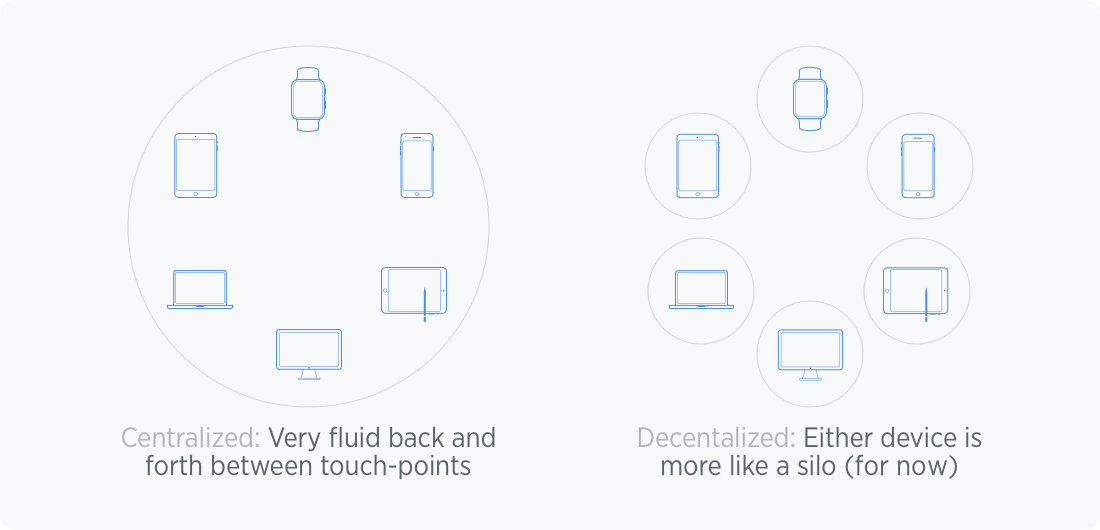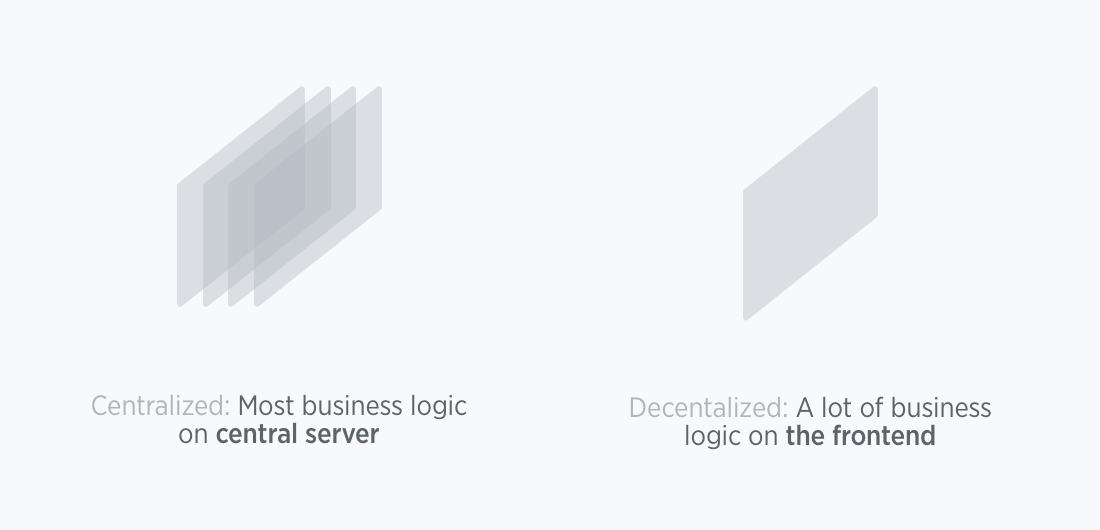The Problem With Cross-Platform Experiences on the Blockchain
Jun 25th, 2019 - Written by Andree Huk
Designers love to craft holistic experiences. A strong part of such holistic experiences is the fact that customers or users shall be able to move fluidly across and between touch-points, platforms or devices. Conventional, go-to services like Spotify, YouTube, Asana, Netflix or similar whether B2B or B2C are all very similar in regard to e.g. how account creation or on-boarding has been designed. The industry has matured on many levels in this regard.
Now, you may argue that users interact with blockchain-enhanced services on the same devices as with conventional counterparts, account creation or on-boarding shall work the same way. And yes, it should.
"Yes, the usability of blockchain-enhanced service must be on par with traditional, centralised services."
Unfortunately, it ain’t so easy. The blockchain or crypto industry will either take some years to bring the usability up to par with conventional services or design paradigms that make them even better.
For example: A potential new customer buys a Spotify gift card in a supermarket. Her first touch-point was the purchase in the supermarket. Obviously, apart from the gift card itself, the store experience is impossible for Spotify to craft and control. Nonetheless, the store is the first exposure to the Spotify Experience for the new customer.
While heading home after work, the customer downloads the Spotify’s mobile app and uses the gift card to create a new account. On the weekend she installs the native Mac app alongside the one for the her iPad.

To summarise, the new customer’s
- First touch-point was in the supermarket
- She created an account on mobile while heading home
- She installed the native client on her Mac
- From then on, she will likely listen to music via the native mobile and desktop apps
To me, this looks like a very common scenario these days, although, not all services that come to mind may have fully native apps.
How important such cross-platform experiences are to companies, product and design teams shows this role of Product Design Manager - Cross-Platform Experiences role at Spotify which I found by accident.
But, what does experiences actually consist of?
In order for us to better discuss the nuances of experiences across blockchain-enhanced services, let’s quickly review what aspects an “experience” actually entails? This is by no means a conclusive list, but it helps us to clarify the topic at hand. Various aspects could be:
- A point of sale
- A sales gal or guy
- The visual design of interface
- The interface’s logic and/or interaction design
- A company’s customer service
- The physical product design
- The physical device or space (e.g. a car or coworking space)
- Copy as in tone or wording
- Whether the service communicates with users in formal or informal language
- ...and many more.
In this article we will predominantly focus on devices as well as the actual interface users interact with. And of course, we will discuss the ramifications these human interfaces will have when a service uses a blockchain underneath.
Now, not just because of the plethora of privacy scandals of Facebook (here, here, here and here from 2005 to link a few) you do know that basically all digital services (not just Facebook) store your data on central servers.
This is, of course, where new digital services with blockchain or distributed ledger technologies step in. These new services, for example, want to give the control of your data back to you. Unfortunately and as it typically goes with the newest technologies, blockchains do come with some drawbacks (at least in the short-term).
Moving the business logic to the frontend
We have detailed some of these challenges in a handful of articles in Product and Usability Challenges of Decentralised Services (part 2). The most striking difference technically is that blockchain-enhanced services move from a centralised server architecture to a decentralised one. This difference implies not just usability challenges in regard to users’ mental models.
"Unfortunately and as it typically goes with the newest technologies, blockchains do come with some drawbacks (at least in the short-term)."
Product designers and engineers also face challenges towards making their services truly cross-platform. We all have gotten accustomed to, as in the Spotify example at the top, to start listening to music or a podcast on one device in order to continue or finish it on another.

This ain’t so easy on these blockchain-enhanced services.
Why is this?
When you sign-up for a new service, the frontend of this service does not send the account credentials you entered to any remote server. It does not even store them locally either. There may be services that store some credentials locally, but these only act as a shortcut to align your login experience as best as possible with that on centralised services. Now, you may now wonder “how can I log into the service if the service does not store anything anywhere?”.
Well, the service’s frontend validates your inputs against an algorithm. When the result validates positively, you can log in as you are used to. If the validation fails, it won’t let you proceed. This post goes into more detail in that regard.
You may have already guessed the implication of not having credentials shared with a central server. The login experience won’t be as smooth as you are used to on conventional services.
But that’s actually not the main issue. It is also not a matter of web or native technologies.** The real one is such that account creation flows on blockchain-enhanced services do not use email and password, but a 12 to 15-word mnemonic or seed phrase. That’s the real kicker (negatively speaking) for cross-platform experiences.
In order to log in on a another device on a (typical) blockchain-enhanced service, you would have to enter this 12 to 15-word seed phrase. No password, no email address. As many blockchain-enhances services make use of some currency, whether it be crypto or fiat, the service makes heavy use of automatic logouts after 15-30 minutes—for security reasons, of course.
You basically have to log back in again and again on other devices. Password managers will came in very handy. But even these password managers are not evenly distributed among the general population.
Conclusion
The fact of the matter is that account creation flows (and that’s where many service experiences start) on blockchain-enhanced services are very different from a technical- and UX point of view for two main reasons:
a. Money-related services must put security front and center and
b. the frontend takes on more responsibility than on traditional services (where most logic sits on the backend). This results in different account creation flows (apart from a ton of other implications).
"You basically have to log back in again and again on other devices."
As the industry is still in early stages, the technology and any related user experience are still maturing. It’s hard to tell how either will evolve so it’s important for designers and engineers to consider the very nuances of the experience they craft very carefully. Could we support you on this challenge?
Want to come up with a new digital product, expand your existing business, stay competitive? What's your next step?
Get in touch with Andree Huk
at +49 30 5557 7174 or [email protected].